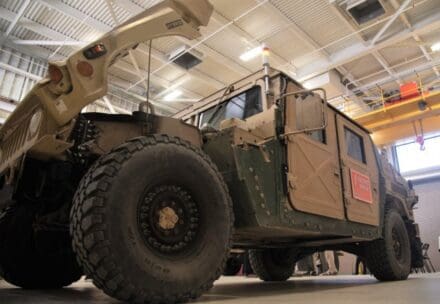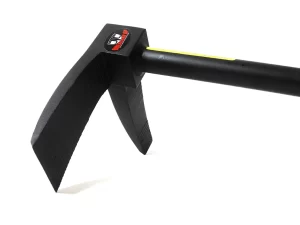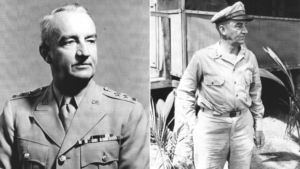ABERDEEN PROVING GROUND, Md. — In February 2024, the Rapid Capabilities and Critical Technologies Office demonstrated the operational advantages of hybridization to several distinguished guests. The demonstration centered on highlighting the vehicle’s impressive features, which include an extended silent watch, silent mobility, increased on-board power generation and off-board power export.
The RCCTO’s Tactical Hybrid Electric Vehicle program demonstrates the operational effectiveness and automotive performance of standard tactical vehicles while validating the operational benefits of hybridization. Integrating hybrid electric technology will enable the vehicles to operate silently at greater range and more available power for weapon systems and power grids on and off the vehicle. All of these remarkable features provide greater capabilities for our Soldiers.
“The work that the government team and the DoD contractors have completed is a game changer for the Soldiers in the field. We have added silent mobility capability, exportable power, and increased the vehicle range with batteries while reducing heat signature and sound,” said Michael E. Foster, Sr., Director of the Rapid Acquisition Prototyping Project Office within the RCCTO.
“Today’s demonstration underscores the importance of continuing to invest in and develop these technologies. By evaluating innovations, bridging gaps, and collaborating with industry, we strengthen our ability to provide the best tools and resources for our Soldiers, enhancing their safety and capabilities on the frontlines,” said Lt. Gen. Robert A. Rasch, Jr., Director of the Rapid Capabilities and Critical Technologies Office.
The ongoing prototyping efforts for the Stryker and High Mobility Multi-Purpose Wheeled Vehicle continue to give Soldiers the opportunity to validate hybrid electric technologies in operational environments. These vehicles are being tested in real-world military settings to assess their performance and efficiency, ultimately shaping the future of hybrid electric vehicles in military applications.
By Venetia Gonzales
This entry was posted
on Saturday, April 13th, 2024 at 00:00 and is filed under Army, Guest Post, Mobility, Power.
You can follow any responses to this entry through the RSS 2.0 feed.
You can skip to the end and leave a response. Pinging is currently not allowed.



